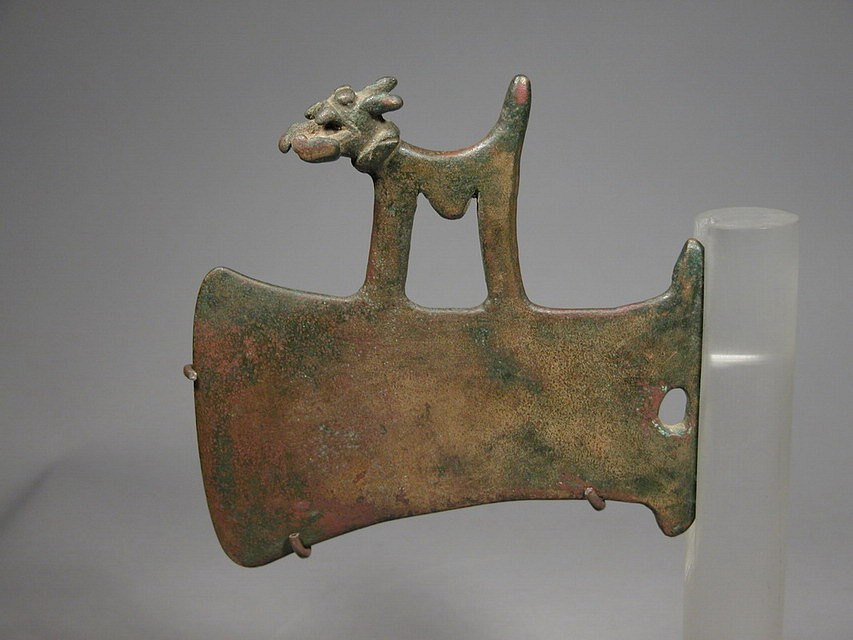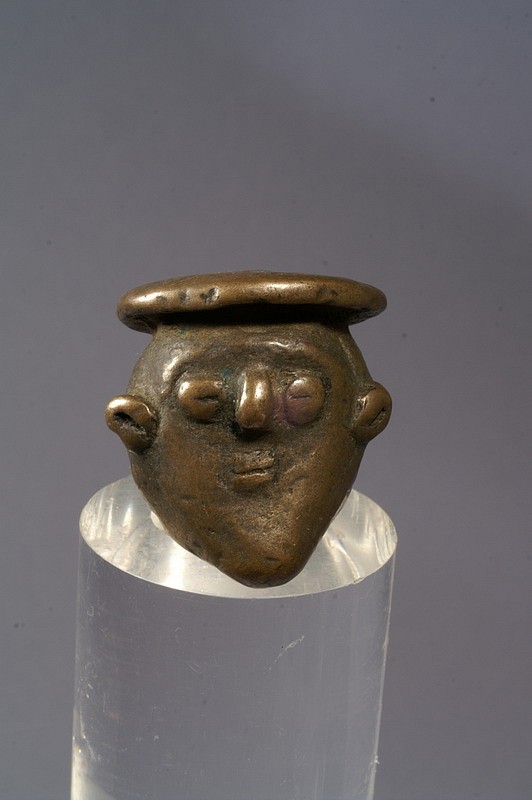


Bolivia, Bolivian Bronze Axe with jaguar on the blade
Bronze axes from Bolivia were often surmounted with the figure of a collared jaguar, with an erect tail and tongue protruding between the fangs of the lower jaw. Similarly stylized Peruvian examples are shown in Carcedo de Mufarech (1999: fig. 157; and Posnansky 1896: v. 3/4: pl. 87). Although this piece is technically provincial Inca, the form of the collared jaguar came from regional cultures in Bolivia.
Period: Bolivian, Inca, 1440-1532
Media: Metal
Dimensions: Height: 4 1/4" / Width of Blade: 5"
$6,500
MM037B




Bolivia, Pre-lnka Broze Bola for Throwing Weapon
Figurative bolas are rare, originating near Lake Titicaca, which straddles the border between modern Peru and Bolivia. These ornate weighted bronze heads high prestige versions of utilitarian bolas, which were used as counterweights at the end of length of rope or rawhide to form a hunting weapon or lasso. Referred to ayllas in the Quechua language or boleadoras in Spanish, these weapons were used to capture game such as llamas and guanacos by entangling their legs and knocking them down to the ground. Each weight is cast with an opening at the top for inserting and knotting cord. This bola features a stylized but characterful face portrays a highland dignitary sporting distinctive headgear, a marker of ethnic identity across the Andean world. Arthur Posnansky discusses related styles of bronze cudgels and boleadaras in his 1986 text, Tihuanacu: The Cradle of American Man. vol. 3/4, pages 84 and 88.
Period: Bolivian, pre-Inca, 1200-1400
Media: Metal
Dimensions: Height: 1 3/4"
$2,200
M7005A

